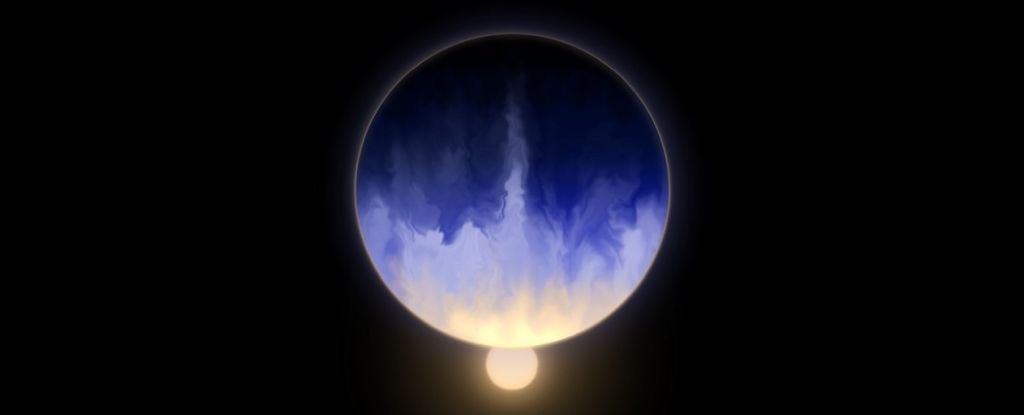There are worlds beyond our solar aperture, stranger than any we can conjure in our dreams.
Among these is WASP-107b, an exoplanet that has continued to bewilder astronomers since its discovery.

Located merely 200 light-years away, this oddball planet captured attention due to its unusual composition.
WASP-107b stands out not only for its size and density – at 96% the radius of Jupiter, yet less than a tenth of its density – but its atmosphere is unlike any other.
A new analysis has uncovered a peculiar asymmetry in WASP-107b’s atmosphere, particularly between its eastern and western edges.
This discovery was made using a novel technique, which might pave the way to identifying similar quirks in other exoplanets.
Matthew Murphy, an astronomer at the University of Arizona, notes, “This is the first time the east-west asymmetry of any exoplanet has ever been observed as it transits its star, from space.”
Exoplanets pose a significant challenge for detailed study due to their dimness and proximity to stars, whose brightness often obscures potential data.
The key to understanding these distant worlds lies in a transit event, where the exoplanet passes in front of its parent star.
During this passage, some of the star’s light filters through the planet’s atmosphere, enabling astronomers to gather crucial data about its composition.
Discovered in 2017, WASP-107b is strikingly close to its star, an orange dwarf, orbiting it every 5.7 days, resulting in extreme temperatures around 500 degrees Celsius.
The planet is tidally locked, meaning one side perpetually faces the star, while the opposite side remains in constant shadow.
This unique positioning could impact the atmospheric components along the day-night boundary.
Murphy and his team leveraged data from the James Webb Space Telescope (JWST) to delve deeper into the differences in compositional makeup between the exoplanet’s hemispheres.
Previous observations of WASP-107b’s atmosphere had revealed elements like sulfur dioxide, water vapor, carbon dioxide, and even sand clouds.
Interestingly, the temperature differences were discernable; the eastern ‘morning’ side being cooler than the western ‘evening’ side, along with varying cloud opacity levels.
This discovery challenges existing models, as they do not predict such asymmetries in WASP-107b.
Further observations and analyses will be crucial to unravel the intricate details of this exoplanet’s atmospheric chemistry.
While asymmetries in exoplanet atmospheres are not unheard of, past discoveries attributed them to atmospheric circulation patterns.
The new insights into WASP-107b mark a significant advancement in our understanding, potentially opening a new chapter in the study of alien atmospheres.
Thomas Beatty, from the University of Wisconsin-Madison, elaborates, “This is really the first time that we’ve seen these types of asymmetries directly in the form of transmission spectroscopy from space.”
This breakthrough suggests that the future holds more intriguing revelations as techniques evolve, enhancing our grasp of the atmospheric compositions of distant worlds.
Though this exploration is only just beginning, it promises to unravel the vast mysteries of countless exoplanets, lying in wait within the depths of our galaxy, eager for discovery.
